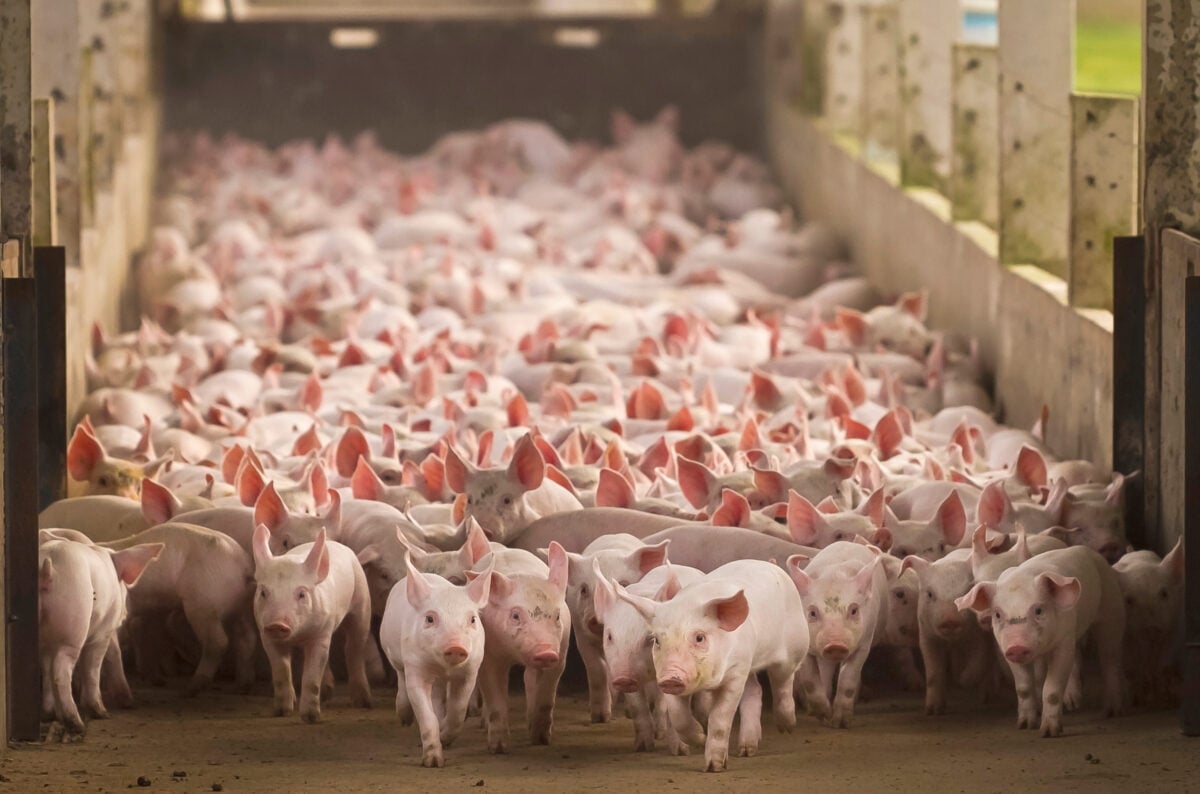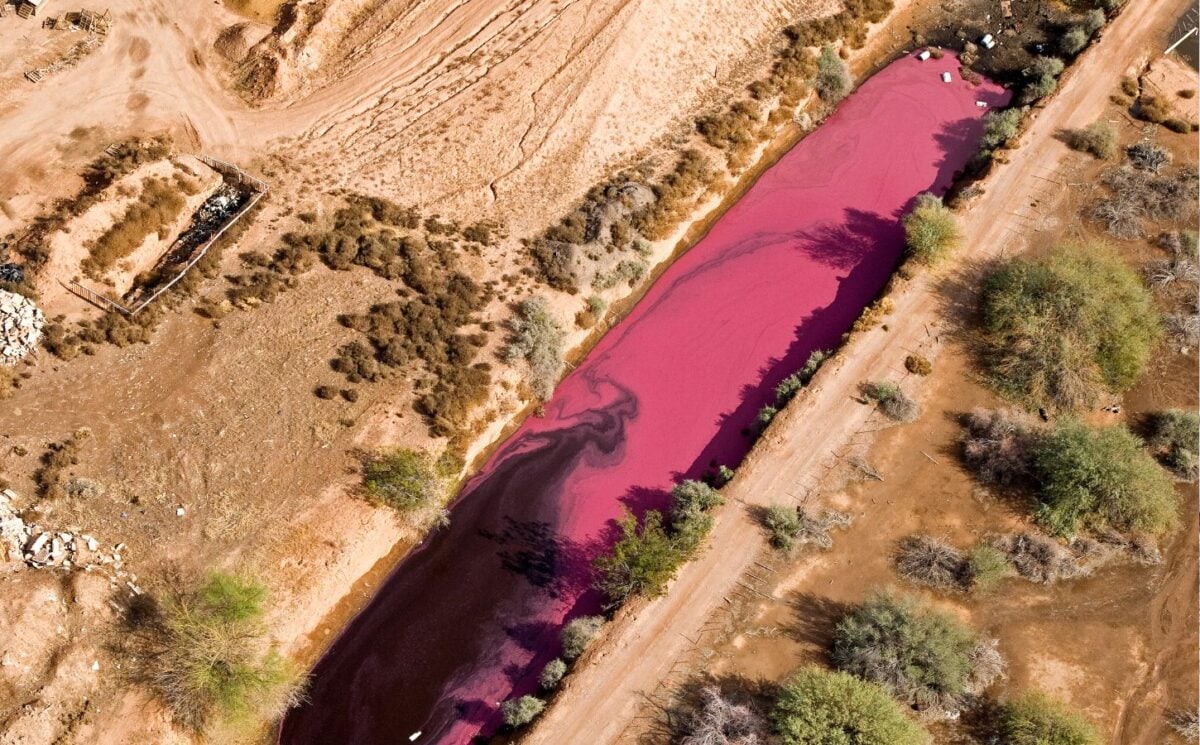New research shows that factory farm pollution can be seen from space.
A team of researchers from the University of Virginia used satellite data to measure ammonia levels across North Carolina. Elevated ammonia levels in the atmosphere correlated with factory farm locations, particularly across the Eastern part of the state.
The new research further vindicates the health and safety concerns of people living near factory farms and other intensive agriculture operations. It also confirms that the pollution from industrial pig farming, in particular, disproportionately affects communities of color.
From 2016 to 2021, the researchers found that ammonia levels were 49 percent higher for Indigenous communities, 35 percent higher for Hispanic and Latinx communities, and 27 percent higher for Black communities compared to non-Hispanic white communities.
Ammonia is an extremely corrosive pollutant produced by intensive pig farms that harms human and environmental health. North Carolina’s thousands of factory farms make billions of gallons of waste each year, much of which forms toxic, ammonia-emitting lagoons.
The team also found that weather exacerbates ammonia’s negative impact on BIPOC North Carolinians. They reported that hot days made inequalities 31 percent more pronounced for Black communities, while windier days made inequalities 64 percent higher for Indigenous communities.
The research was published in Environmental Science & Technology at the end of January.
Read more: Factory Farms Cost UK Taxpayers Over 1.2 Billion Pounds Per Year, Says New Report
North Carolina’s pig problem

North Carolina is home to approximately 2,000 intensive pig farms that raise almost around 10 million pigs (that’s more than the human population)
A significant proportion of the state’s pigs are factory-farmed in the counties of Duplin, Samson, and Robeson, where Black, Latinx, and Indigenous people make up nearly 60 percent of the population. In a letter from 2017, the EPA described a “linear relationship between race/ethnicity” and the density of factory-farmed hogs.
The negative impact of intensive pig farming on North Carolina residents has been well-documented, including investigations, lawsuits, and regular media coverage. However, factory farming continues to dominate US meat production, despite spiraling health issues, environmental damage, and increased acknowledgment of environmental racism.
Sally Pusede, lead author of the new study and professor at the University of Virginia’s Department of Environmental Sciences, told Vox that scientific data is essential in backing up people’s first-hand experiences, particularly of environmental racism.
“There are very few measurements of air pollution associated with industrialized agriculture from the ground,” said Pusede. “Without data to show that and support that, those claims can be contested.”
Read more: Berkeley Becomes The First US City To Ban Factory Farming






